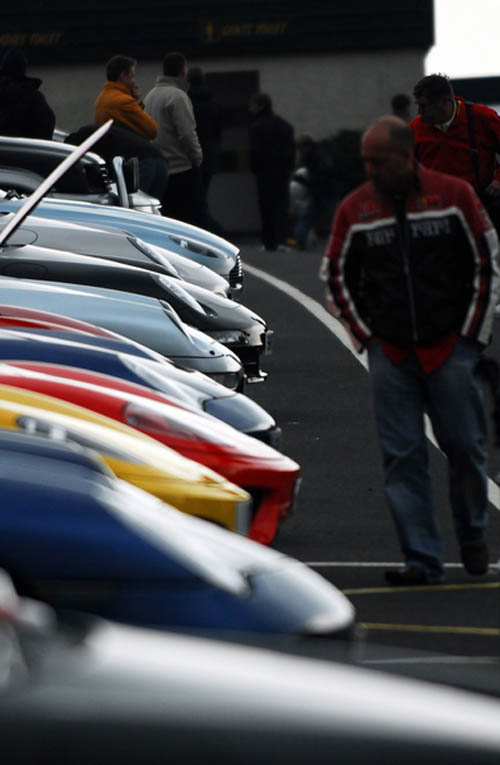WEALTHY boy racers have been blamed for a spike in road accidents on Scotland’s rural roads, safety experts claim.
A new ‘crash map’ compiled by the Association of British Insurers (ABI) shows 192 people under the age of 24 have died or been injured over the last six years in Banff and Buchan in Grampian.
The report, compiled to coincide with Road Safety Week this week, comes with proposed measures to reduce the dangers such as zero tolerance on alcohol consumption, a night-time curfew and a minimum one-year learning period.

Campaigners blame a culture of speeding among newly qualified drivers from richer backgrounds who don’t have the “experience and maturity” to handle powerful 4x4s or speedy sports cars.
There was even a suggestion young people who think they can control fast cars in a computer game are cocky in thinking they can control cars the same way in real life.
Calls have now been issued for restrictions on the types of cars available to new drivers.
The ABI report said: “These figures show that over 800 families have been devastated across Scotland between 2005 and 2011 – that’s more than two families every week.”
Also in the list of the top five is West Aberdeenshire and Kincardine and Gordon with areas in the Borders also having a high casualty rate.
However the casualty rate around Glasgow and Edinburgh, as well as the Outer Hebrides and Shetland and Orkney isles, remain relatively low.
Emma Bellu, chief executive of Absafe which runs the Safe Drive Stay Alive campaign, said: “There are many contributing factors to Grampian constituencies having the first, second and fourth highest number of young driver deaths in Scotland.
“Higher levels of affluence means younger drivers have easier access to faster and more powerful cars.
“Young drivers in particular have not yet fully developed their risk awareness skills – this comes from experience and maturity and we want to ensure young drivers are fully aware of what can go wrong.”
Sherri Thomas, 44, whose daughter Laura was killed on a Banff road, said: “They need to do something about it. Some young drivers think that because they can win [computer] games driving at 200mph they think they can drive like that when they pass their test.”
Laura, 19, who was taught to drive responsibly by her mum’s driving instructor partner, was killed in June 2010 after being hit by a driver who was twice the legal drink drive limit.
Ian Smith, 21, was jailed for four years for death by dangerous driving but mum Sherri still struggles to cope.
She added: “What I would suggest is that there are limits placed on the power of cars young people can drive.
“The have restrictions on bikers so why not cars as well? That would probably help stop the boy racers – it would be a good idea to limit the number of passengers and a curfew would be good too.”
“Radical”
Ian Wallace, chief inspector and head of road policing for Grampian Police Service, also believes that the rich racers are a cause for concern.
He said: “There has to be an element of young drivers not adhering to the rules of the road and our figures show about 30% of our drink drivers are between 17 and 25.
“The north east does benefit in being relatively prosperous and there is no doubt younger people have access to a much better range of cars than they had 10 or 20 years ago.”
James Dalton, ABI’s assistant director of motor and liability, said: “Radical action is needed to reduce the tragic waste of young lives on Scotland’s roads.
“A car is a potentially lethal weapon and we must do more to help young drivers deal better with the dangers of driving.”
Mark MacDonald, SNP MSP for north east Scotland, said: “Deaths on Scotland’s roads are down by 11% on last year while casualties overall are down by 4%.
“It is still a case that young drivers – the group most likely to be newly qualified – remain substantially more likely to involved in a road accident.”
